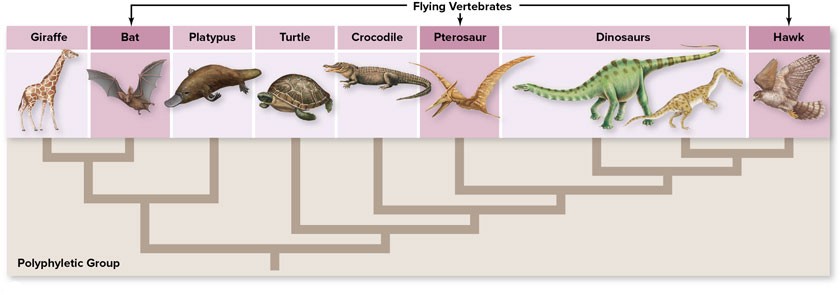The (bacilli/Lactobacilli/bacteroids) are a group of Gram-negative bacteria that include obligate anaerobes normally found in the intestinal tracts of animals and humans.
Fill in the blank(s) with the appropriate word(s).
bacteroids
You might also like to view...
 Based on the above diagram and other information from your text, what is the most likely (e.g., most parsimonious) explanation for the evolution of flight in vertebrates?
Based on the above diagram and other information from your text, what is the most likely (e.g., most parsimonious) explanation for the evolution of flight in vertebrates?
A. Wings evolved once in vertebrates (e.g., the common ancestor of all terrestrial vertebrates had wings), and wings were subsequently lost in all but three lineages: bats, pterosaurs, and birds. B. The common ancestor of all terrestrial vertebrates was wingless, and wings evolved independently three different times: in bats, in pterosaurs and in the common ancestor of birds and dinosaurs. C. The common ancestor of all terrestrial vertebrates was wingless, and wings evolved independently two different times: once in bats and once in the common ancestor of birds, pterosaurs, and dinosaurs. D. The common ancestor of all terrestrial vertebrates was wingless, and wings evolved independently three different times: in bats, in pterosaurs, and in birds. E. The common ancestor of all terrestrial vertebrates was wingless, and wings evolved independently three different times: in bats, in birds and in the common ancestor of pterosaurs and dinosaurs.
. Which cell feature is absent in bacterial cells?
a. plasma membrane b. nucleoid c. cytoplasm d. nucleus e. DNA
Using the allele frequencies in the table below, what is the probability that a random person would be heterozygous 12/14 for VAW?
What will be an ideal response?
Identify the region of the skull that articulates with the atlas.
What will be an ideal response?